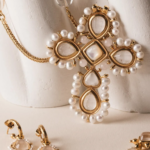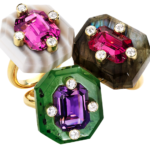Recently, the Dutch royal family hosted a state banquet for the Spanish royal family, where the women of both houses wore dazzling tiaras. Princess Catharina-Amalia, the Dutch crown princess, enthusiastically commented on the tiaras worn that day. In an interview, she revealed her love for tiaras, establishing herself as a “European royal tiara aficionado” with extensive knowledge of royal tiara collections.

This was also the princess’s first state banquet as crown princess, making her the center of attention that evening. She chose the historic Ruby Peacock Tiara (The Ruby Peacock Tiara) for the occasion, paired with matching necklace and earrings, to demonstrate the gravity of the event.
This tiara dates back to 1897, commissioned by Queen Wilhelmina from the royal jeweler Schürmann. The raised “peacock feather” section in the center can be detached and worn separately.

Queen Wilhelmina used her mother’s ruby collection to commission the entire set, which includes matching brooches and a necklace. The necklace and tiara are mirror designs, both featuring a peacock feather motif made of rubies and diamonds at the center, but in opposite positions. Princess Catharina-Amalia’s complete look can be seen, marking the first time she has worn the full set.
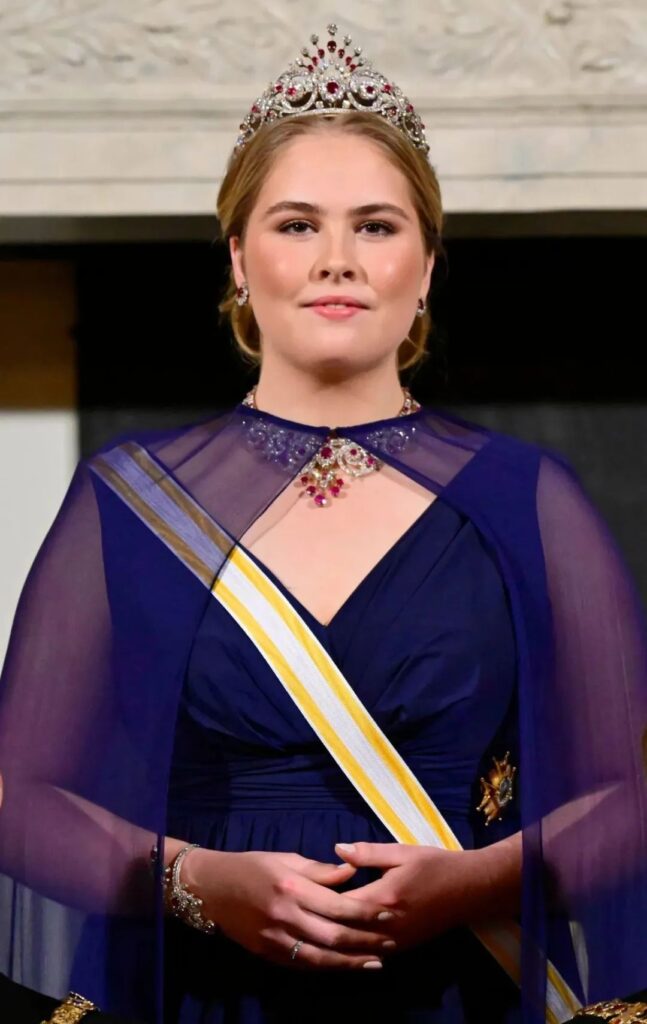
The young princess has a keen eye for jewelry. In her 2021 biography, she told author Claudia de Breij: “I love tiaras. Give me a tiara, and I’ll know where it’s from. I can recognize all the tiaras in Europe. When I was little, I was always trying on my mother’s tiaras in her dressing room.”
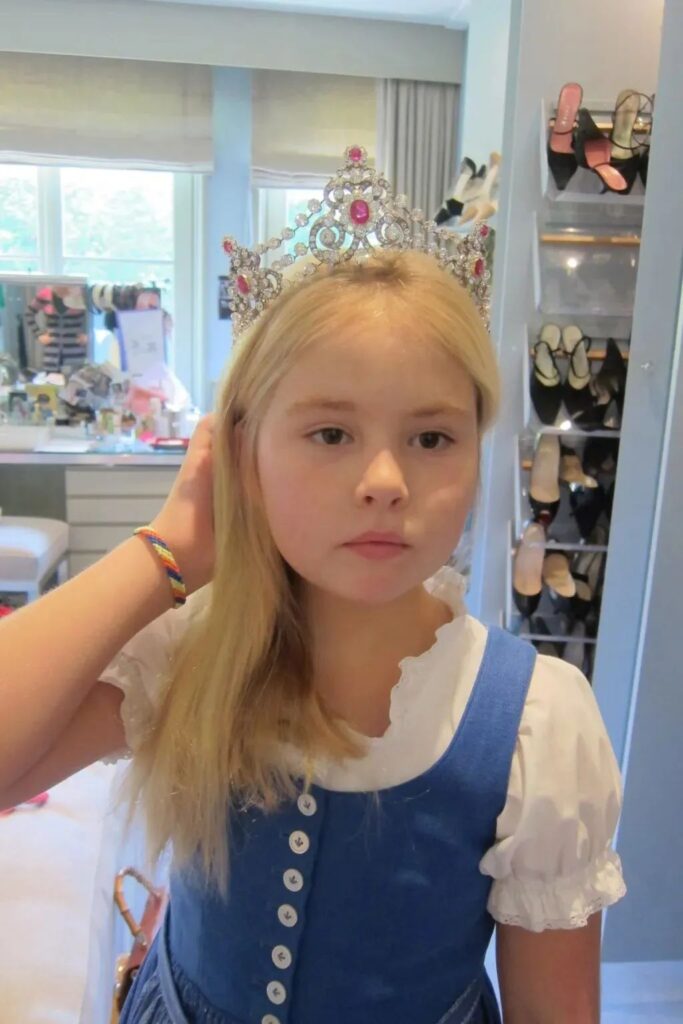
She introduced her mother Queen Máxima’s choice for the evening – the stunning Stuart Tiara (The Stuart Tiara). This tiara was undoubtedly the most brilliant and luxurious jewelry at the banquet. In fact, this was only the second time Queen Máxima has worn its complete version, demonstrating the Dutch royal family’s seriousness in hosting the Spanish royal family.
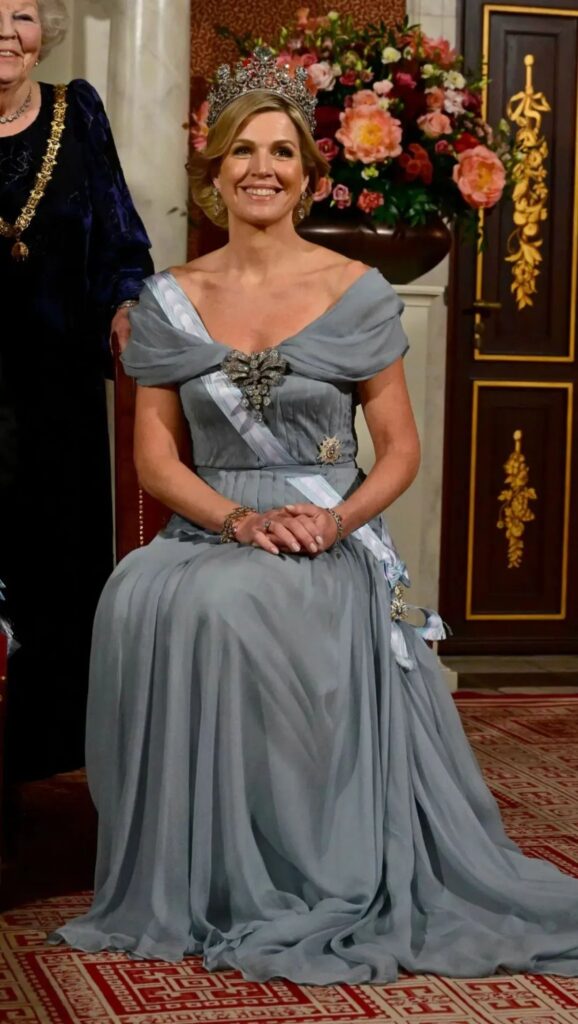
The Stuart Tiara was created in the late 19th century and named after the 39.75-carat pear-shaped Stuart Diamond it contains. As the name suggests, this diamond has connections to England. It was purchased by King William III and Queen Mary II of England during the “joint monarchy” period of the Stuart dynasty.
This married couple were cousins, both grandchildren of Charles I. After the Anglo-Dutch Wars, William III of the Netherlands and his wife jointly inherited the English throne. However, as they had no heirs, the diamond and other possessions returned to the Netherlands after their deaths.
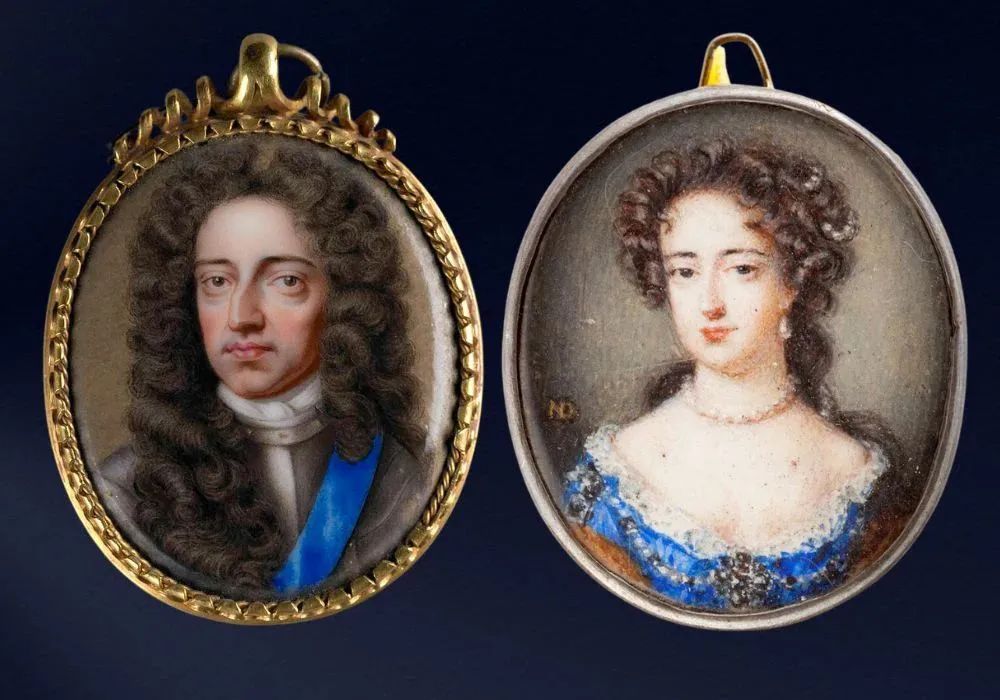
Therefore, this tiara is precious to the Dutch royal family not only for its splendor but also for its historical value, making it the crown jewel of the Dutch royal jewelry collection. The main stone, the Stuart Diamond, was initially set in a brooch for Queen Mary II. After returning to the Dutch royal family, Queen Wilhelmina had it set as a pendant necklace.
It wasn’t until 1897 that Schürmann designed the Stuart Tiara at Queen Emma’s request, becoming the centerpiece for her daughter Queen Wilhelmina’s inauguration ceremony.

Due to its extravagance, the tiara was designed to be worn in three different ways. The Stuart Diamond set at the top doesn’t often make an appearance. Queen Máxima usually wears its reduced or simplified versions, choosing the complete version this time to mark the occasion’s importance.
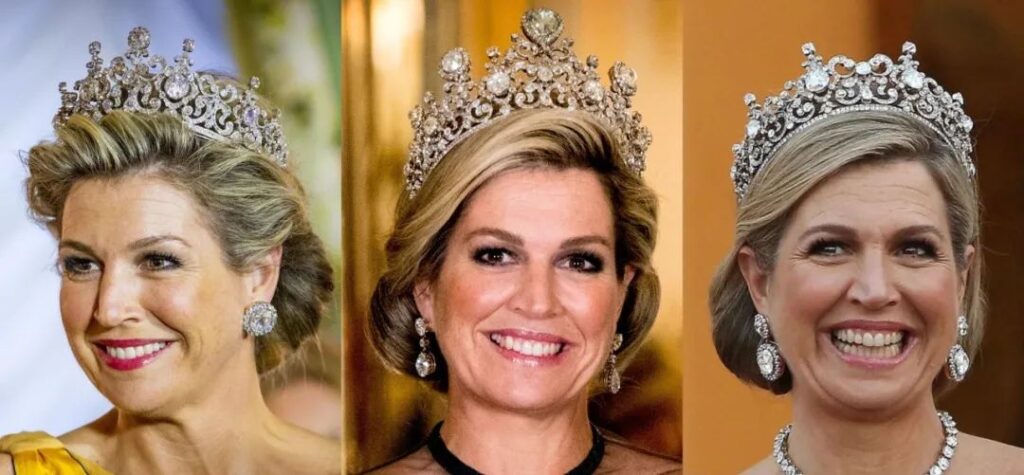
Princess Amalia’s grandmother, Princess Beatrix, the former Queen of the Netherlands (her title reverted to Princess after abdicating in favor of her son), kept a low profile that evening, wearing the Dutch Diamond Bandeau.
It was originally a massive Rivière diamond necklace weighing over 100 carats. In 1937, Queen Wilhelmina decided it was a shame to wear it only as a necklace and had it converted into a bandeau tiara.
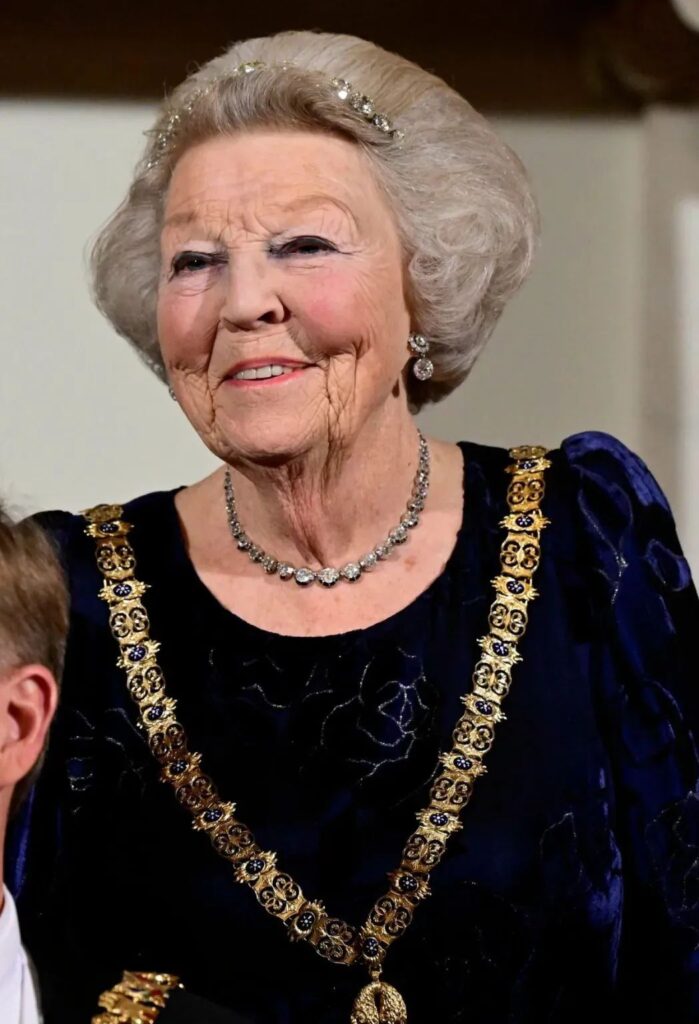
Princess Margriet, Princess Beatrix’s sister, also appeared at this state banquet. She wore another Dutch royal family heirloom – the Dutch Laurel Wreath Tiara. As the name suggests, this tiara is designed around the theme of a laurel wreath, symbolizing victory, which is a very popular style among European tiaras.
The Dutch royal family’s version is said to have been Princess Beatrix’s 18th birthday gift, which she has always shared with her two sisters.

Moving on from the Dutch royal family, let’s discuss the guests from the Spanish royal family. Princess Catharina-Amalia could effortlessly recount the history of the tiara worn by Queen Letizia of Spain. Indeed, for the evening, Queen Letizia specifically chose the Pearl Diamond Loop Tiara, which has a slight connection to the Dutch royal family.
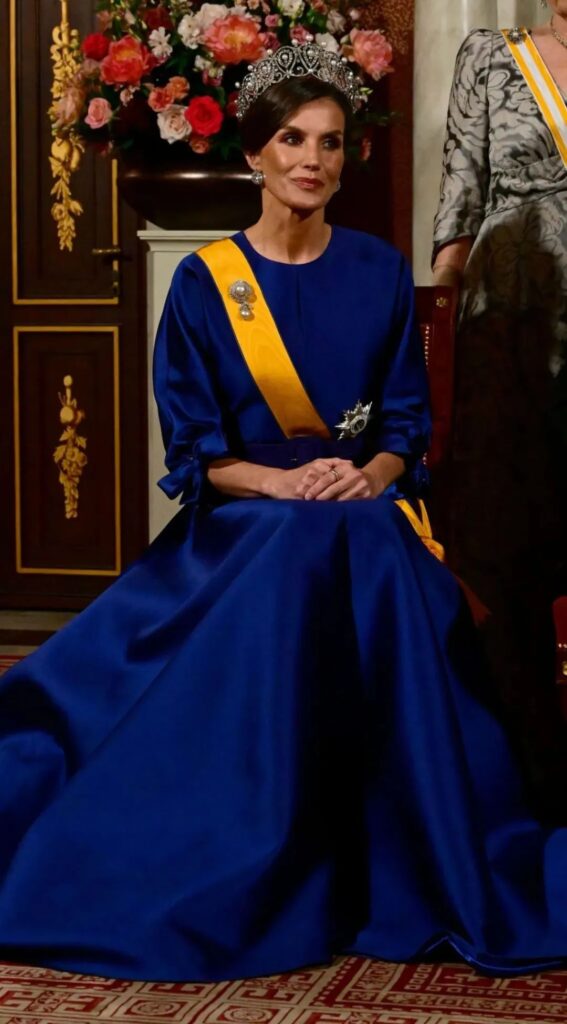
Due to the significant upheavals experienced by the Spanish royal family in the 20th century, royal jewels have always belonged to individual members rather than being managed collectively as “royal heirlooms” or through a foundation, as is the case with other royal families. As a result, the current Spanish royal Bourbon family has retained only a few important tiaras and jewels.
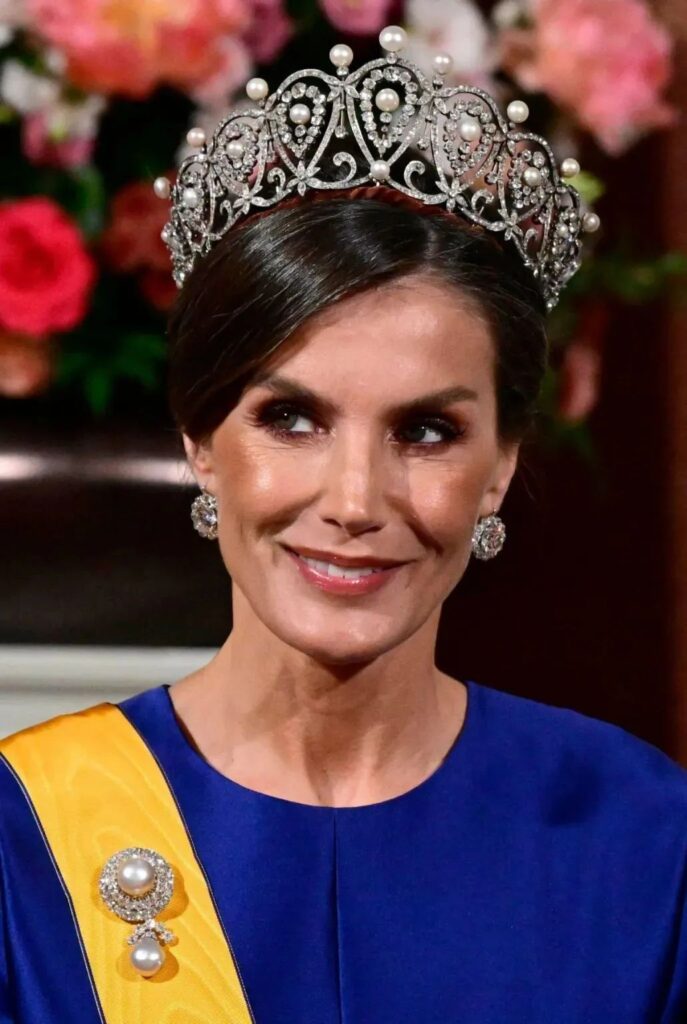
This tiara has a rather convoluted history of remaining within the Spanish royal family. It was originally created in the 19th century by King Alfonso XII for his wife, Maria Cristina. This queen was quite remarkable; her son, the future King Alfonso XIII, was born posthumously. Consequently, from her husband’s death until her son’s ascension to the throne at age 16, she served as Spain’s regent.
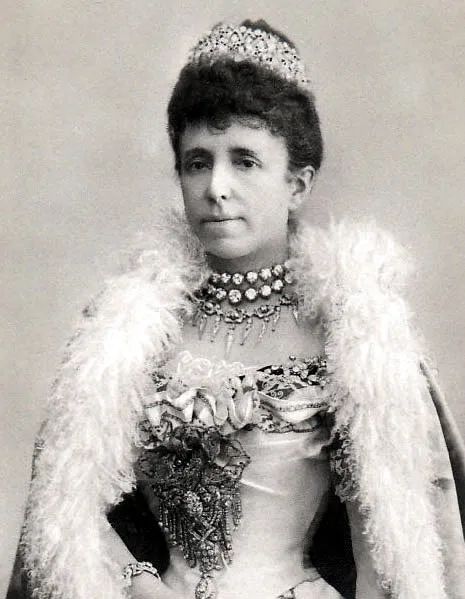
How did Maria Cristina manage to assume power so smoothly? This was because she was not only an Archduchess from the Austrian Habsburg dynasty but also a direct descendant of King William IV of the Netherlands. Queen Maria Cristina was particularly fond of this tiara and only bequeathed it to her son Alfonso XIII upon her death.
This king, in turn, gifted the tiara to his daughter-in-law, the Countess of Barcelona, as a wedding present.
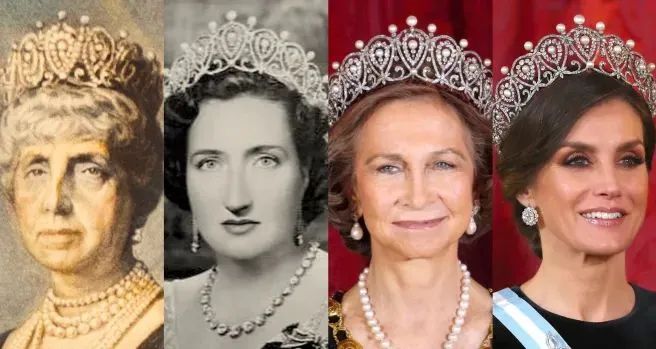
In 2006, the tiara passed into the hands of Queen Sofia, becoming one of her frequently worn pieces. It wasn’t until 2018 that it was officially handed down to Queen Letizia, who made her first public appearance wearing it at a Chinese state banquet in Madrid!
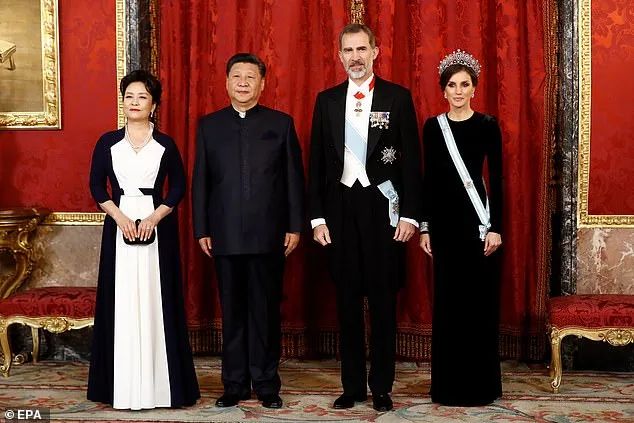
It’s evident that the Spanish royal couple also placed great importance on this visit, choosing to wear their “family heirloom” tiara. Unfortunately, the Spanish Crown Princess Leonor didn’t accompany them on this visit. Otherwise, we would have seen her choice for her first tiara!
Unexpected Tiara Expert: Dutch Crown Princess Takes You Through Royal Jewel Collections
Tweet
